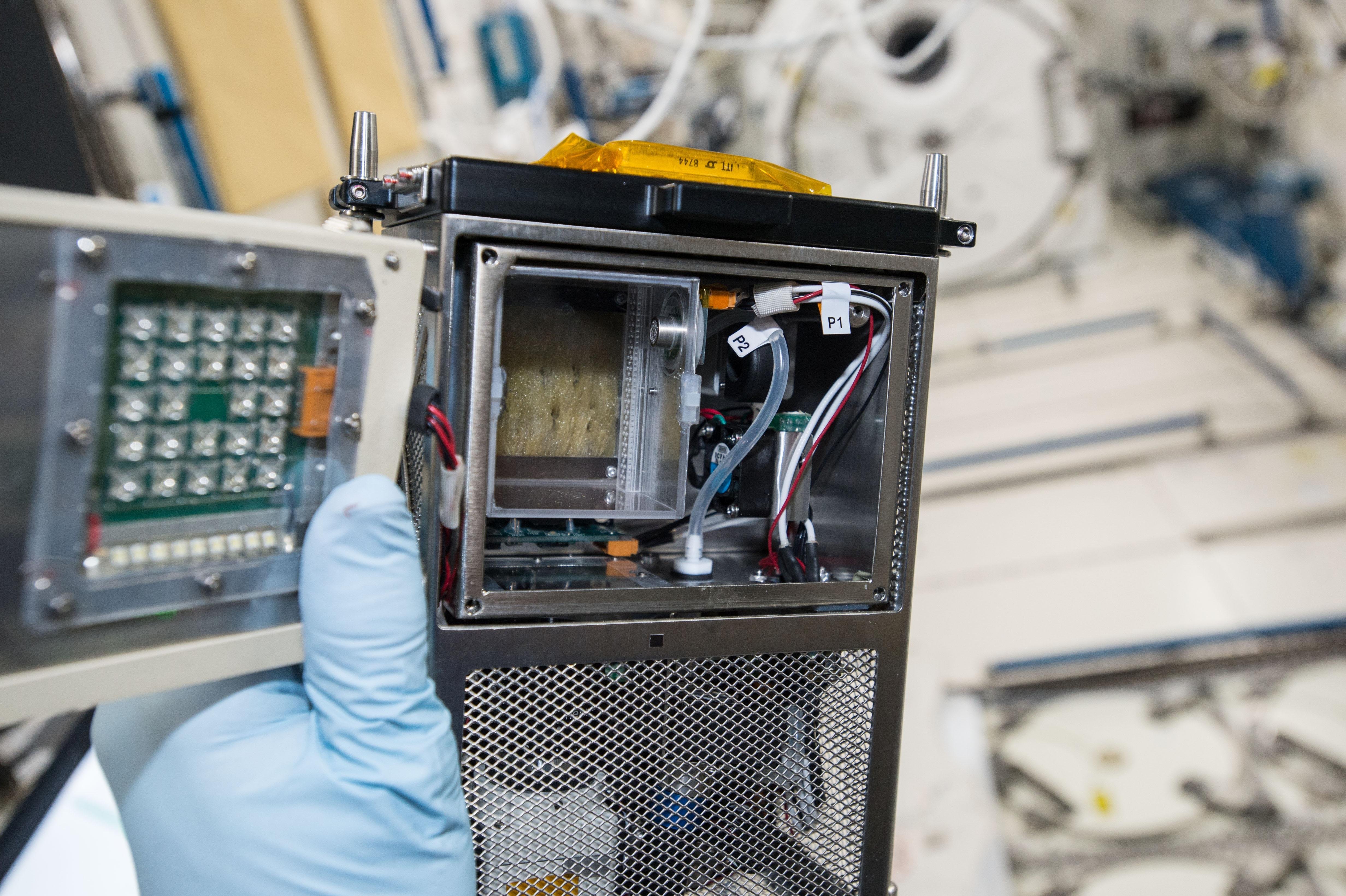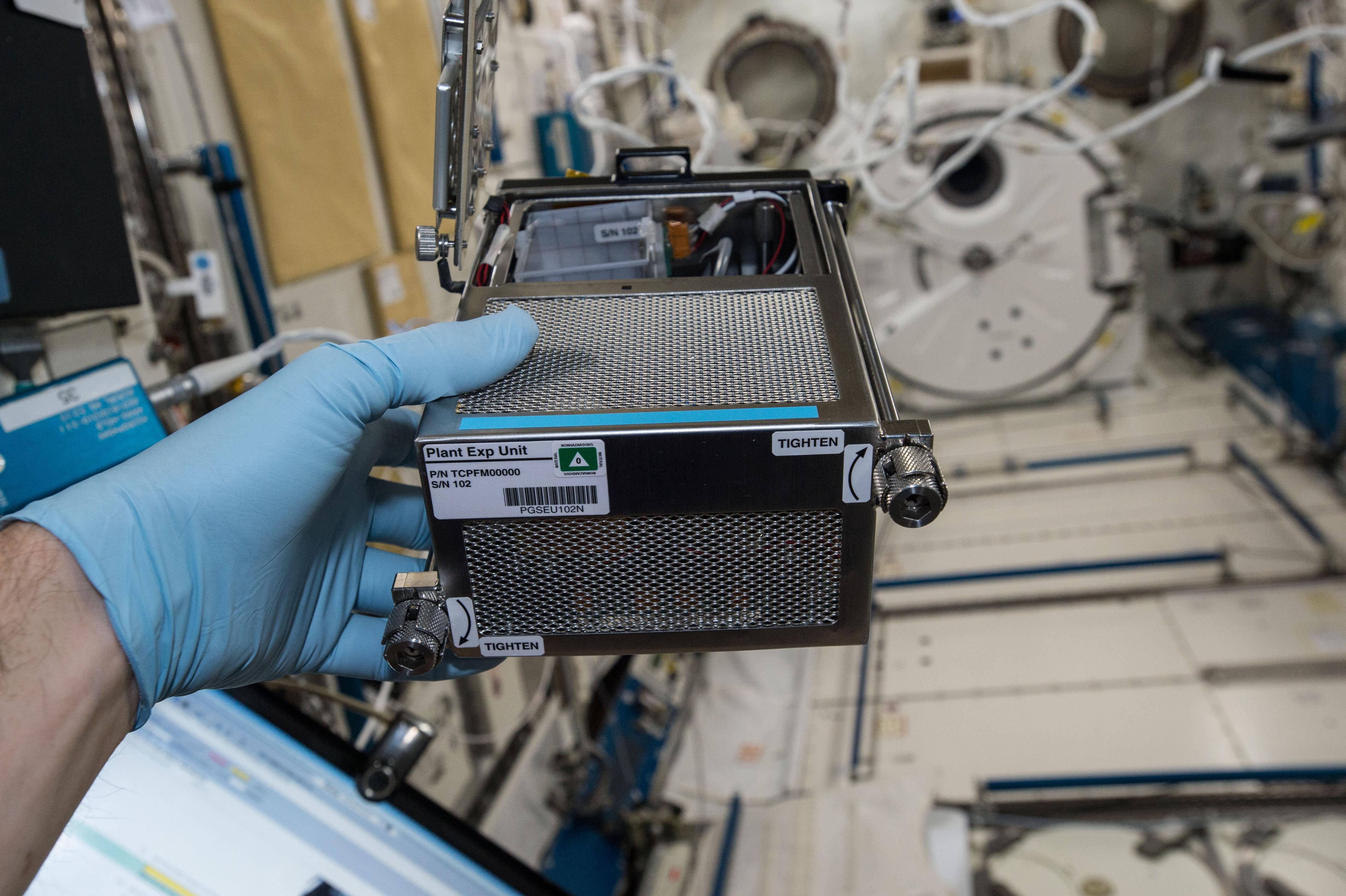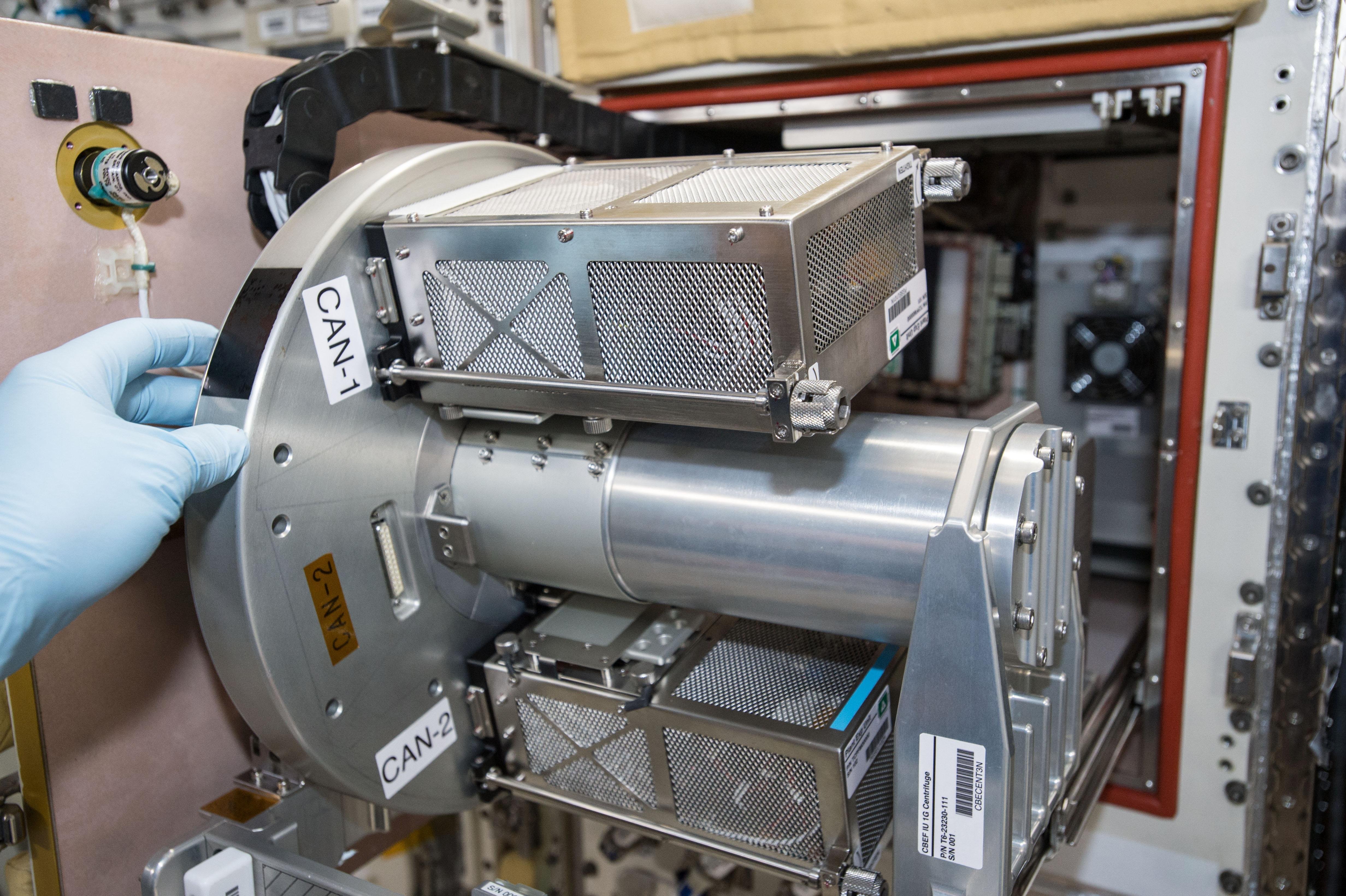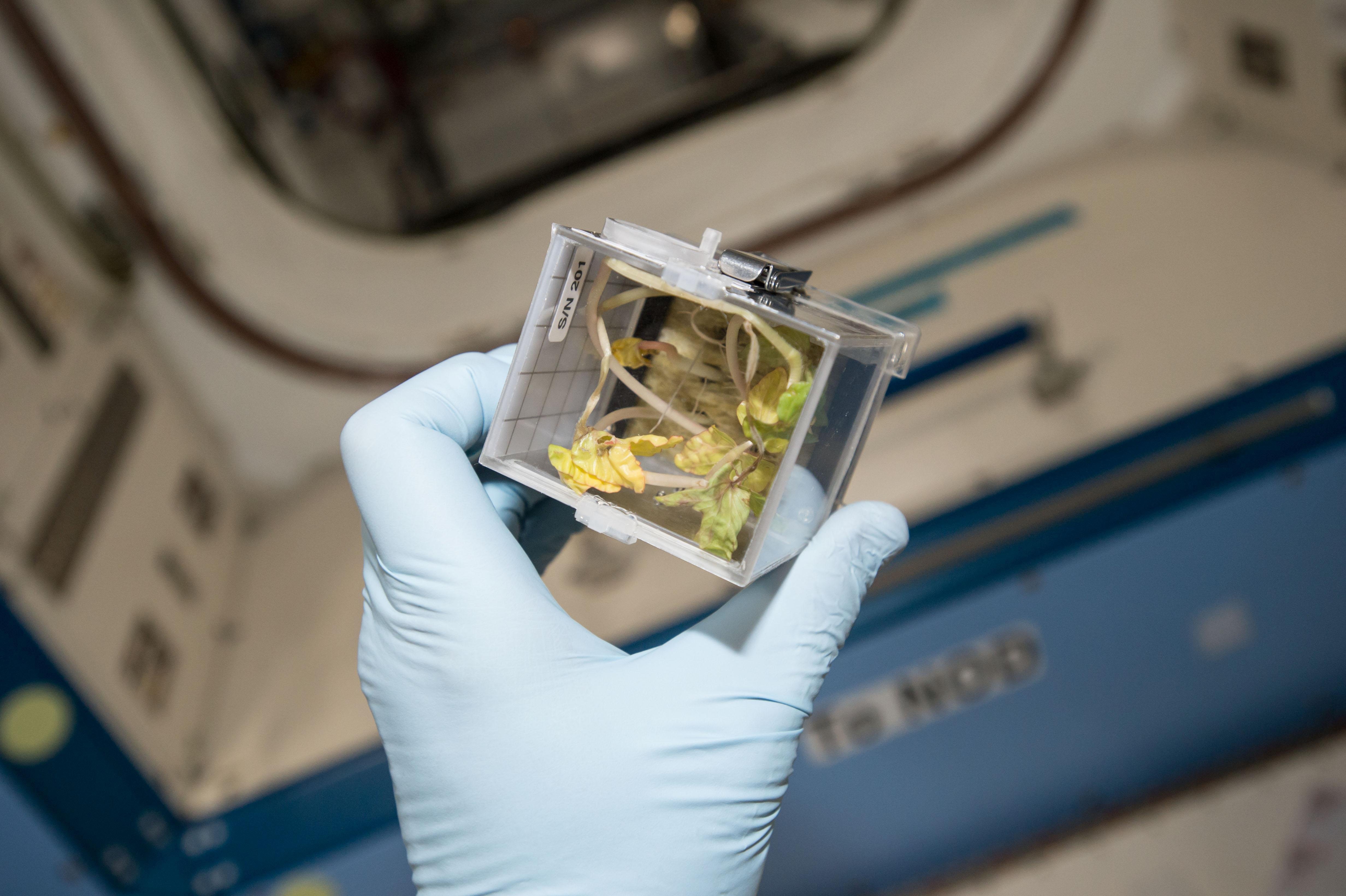- completed
[Plant Rotation]
Plant circumnutation and its dependence on the gravity response
- Biology and Biotechnology
ISS Science for Everyone
SCIENCE OBJECTIVES FOR EVERYONE
Many species of climbing plants grow upward in a spiraling shape, a process known as circumnutation. Plant organs, such as stems, leaves, and roots also grow in a spiraling, helical shape. This spiraling process can take many forms, including very tight loops and broad curves. Plant circumnutation and its dependence on the gravity response (Plant Rotation) verifies the hypothesis that this type of plant growth requires gravity. Scientists on the ground study images of rice and morning glory plants growing in microgravity and simulated gravity conditions on the International Space Station.
Experiment Description
RESEARCH OVERVIEW
- The mechanism for circumnutation is unclear, and it has long been argued whether circumnutation is involved with gravitropic response.
- Rice and morning glory plants are grown under both µG and 1G conditions on orbit, and their growth is monitored by a camera. Images downlinked are analyzed for measurement of plant growth, and nutational movements. This experiment provides data to answer the question whether circumnutation depends on gravity response, or not.
- The results to be obtained from this study help to establish a model for understanding molecular aspects of circumnutation.
DESCRIPTION
Plant organs, such as stems, leaves, roots, etc., display a helical-bending mode of growth movements known as circumnutation. These movements help plant organs find suitable environmental cues. The amplitude, period and shape of the circumnutation differ depending on the plant species or organs. Although the mechanism for circumnutation is unclear, it has long been argued whether circumunutation is involved with gravitropic response. Previously results showed that shoots of weeping morning glory (we1 and we2) are impaired in not only the differentiation of endodermis (gravisensing cells) and gravitropic response, but also winding and circumnutation. In addition, results showed reduced circumnutation in the shoots of Arabidopsis and rice mutants defective in gravitropic response. These results suggest that circumnutation is tightly related with gravitropic response. Also, the results suggest that winding behavior of climbing plants, such as morning glory, may be driven by circumnutation. In the proposed spaceflight experiments, the hypothesis that circumnutation requires gravity response, by using microgravity environment in the KIBO module of the International Space Station, is to be investigated. Morning glory and rice plants are grown under both µG and 1G conditions on orbit, and their growth is monitored by camera. Images downlinked are analyzed for the measurements of plant growth, and nutational movements. This experiment enables an opportunity to answer the question whether circumnutation depends on gravity response, or not. The results obtained in this study help to establish a model for clarifying molecular aspects of circumnutation, and bring about a development of new technologies to efficiently grow plants under altered gravity conditions in space.
Media Gallery





Applications
SPACE APPLICATIONS
Future missions to deep space or other planets requires astronauts to grow their own food. Several food plants grow in helical shapes, in a process known as circumnutation. Understanding how microgravity affects circumnutation and other forms of plant growth helps scientists develop better plant habitats or choose the right plant species.
EARTH APPLICATIONS
Understanding the mechanisms of plant growth, and the cellular activity involved in climbing plants, could lead to new strategies for growing some food crops efficiently in smaller spaces, or getting more products with less fertilizer.
Operations
OPERATIONAL REQUIREMENTS AND PROTOCOLS
12 rice seeds or 9 morning glory seeds are sown in Plant Experiment Chambers.
4 chambers each for rice or morning glory are launched (total 8 chambers).
Each 2 Plant Exp Units with rice seeds or morning glory are incubated in CBEF respectively (4 separate runs).
After 1 day of incubation (rice) or 3 days (morning glory), automated CCD camera observation for 2 days (rice) or 4 days (morning glory) continuously and downlink images.
No sample return requirement.
A crew member gives water to plant seeds in Plant Exp Chambers (4), then set the chambers to Plant Exp Unit (4) respectively. Set Plant Exp Unit to CBEF, 2 in microgravity section and 2 in artificial 1G section. These procedures are repeated 2 times, one for rice and other for morning glory. After 1 day (rice) or 3 day (morning glory), automated CCD camera observation start and continue for 2 days (rice) and 4 days (morning glory) with time lapse image obtaining from all chambers and downlink images.
Publications
PRINCIPAL INVESTIGATOR(S)
TAKAHASHI Hideyuki [Tohoku University]
Unless specified otherwise, rights to all images belong to ©JAXA



